Updated January 2021
Effectively managing tasks isn’t just good for your workflow and productivity in general, it’s good for the mind too.
Maybe it’s because I’m a triple Virgo, but for me, when everything’s organized and in one place, it makes me feel prepared for the day ahead.
But finding the best task management software isn’t always an easy feat because there are so many options to choose from. (I’ve easily tried at least five or six different task management tools in just the last few years.
There are options for spreadsheet lovers and Kanban board fanatics, and then there other types of tools that integrate right into your everyday communication tools. (I’ll give you a hint: The one I’m currently using is built right into my messaging app. 😉)
To help you narrow down your options for task management tools, I’ve broken down the 12 best software and apps I could find. I’ve used many of these, and I’ve also peppered in a few that aren’t as well-known, but piqued my interest. Read on to learn more about (skip ahead if you’d like!):
- What task management software is, exactly
- The benefits of task management software
- The 13 best task management software for productivity
So… What is “task management software?”
Essentially, task management software is a platform, tool, or app that you use to keep your projects and to-do list organized. You can use it for yourself, or to manage a team’s workload, and the format can vary pretty widely.
As I mentioned earlier, some task management tools use project boards while others use spreadsheets or even basic to-do task lists.
Say you’re a project management who’s running an agile team. The agile methodology your team uses will determine how your team collaborates and manages projects. (Scrum, Kanban, and Lean are all popular agile frameworks.) These types of teams are self-organizing and typically each person will take responsibility for their tasks. But when a team has multiple complex projects going on simultaneously, sometimes they’ll need help to manage them all the different moving parts so that things don’t slip through the cracks.
Regardless, if you have a team that needs to stay in sync in order to get tasks done efficiently, the best type of task management software is something that gives you different communication options too. For example, instead of using a separate tool just to manage your tasks, you could try to use software that has task management features built in already.
It’s a pretty novel concept, but I’ll explain more about how this works and what it looks like when we get into the best task management app options below.
That’s right—you don’t have to buy a separate task management tool. This applies especially to small teams or small business owners who just wants to keep on top of daily tasks. I’m a huge fan of Kanban myself, but you don’t actually always need complex software just to knock things off your to-do list.
Now, let’s look at the biggest benefits of using task management software.
What are the benefits of task management software?
1. It keeps you organized
The biggest reason I use task management software? It keeps me organized. Whether I’m using Asana or Trello or the RingCentral app, the end-game is always to stay on top of multiple projects (with multiple constantly shifting priorities).
And that’s the beauty of all these different task management apps. No matter if you’re creating a board, plotting tasks, or assigning projects to different teams, there’s an option out there for the way you prefer to work.
For instance, I’m managing my own team, but also working with an agency that helps us with content creation. I just use the RingCentral desktop app (there’s a mobile app too!) to keep both teams organized.
I can create and assign tasks right in the app:
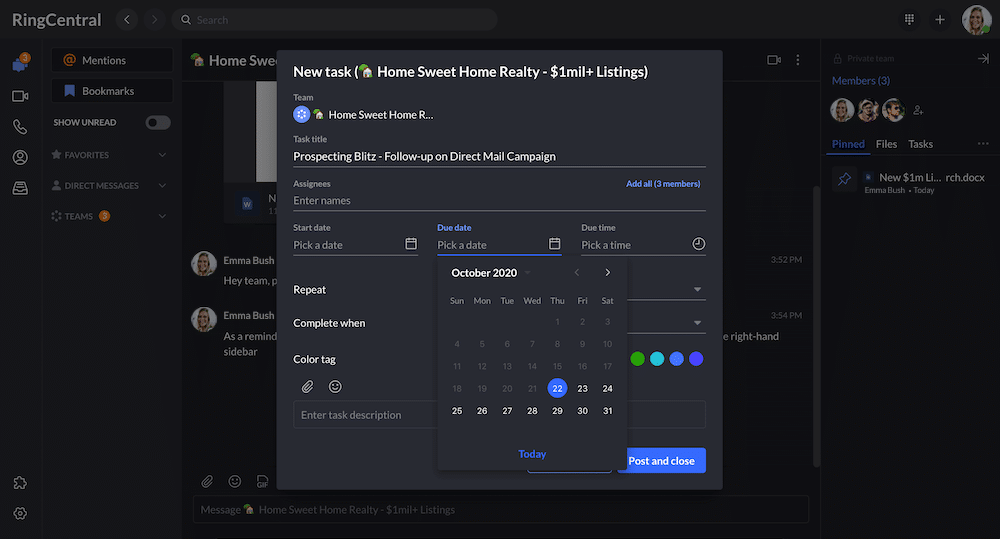
But as you can see, beyond just the basic task management features like setting deadlines and assignees, these tasks go right into team chats once they’re created.
And if you look at the bar going down the lefthand side, you’ll notice camera and phone icons—yep, I can also start video meetings and call my teammates to discuss projects.
For me, this is awesome because I don’t have to open up different apps and toggle between them constantly if I want to create a task for someone on my team. I can literally do it all—message, video call, assign tasks—in the same “task management” app. Let’s just say it makes it much easier to keep track of everything.
2. It helps you manage your time better
Time management can be tricky, especially when you have to account for other people’s time and schedules. Sometimes you get held back because of task dependencies, and you just can’t move onto the next task on the project schedule if a teammate hasn’t finished their part first. It’s like a relay race—you’ve got to pass the baton quickly and efficiently.
One of the things I love most about task management software platforms like Asana and Trello is that they let you break down each project into smaller chunks or tasks, and see what the status of each one is at any given time. Super valuable if you need task-tracking capabilities, especially if you tend to have recurring tasks as well as new ones.
3. It encourages everyone to build good “teamwork” habits
Now that I’m managing other writers’ and editors’ work in addition to my own stuff, I find it pretty hard to imagine not using task management software. (Yes, I’ve drank the Kool-Aid.)
Not only does it make sure everyone is aware of every project in the pipeline, their roles in it, and deadlines, it also gives everyone visibility into their role in the big picture. My whole team is distributed—across countries and time zones. But even so, everyone is still always fully aware of where each project is at and who has the baton.
And we do it using just one app: in RingCentral, we can message each other, start a video meeting to screen share if something isn’t clear, create dedicated threads for tricky projects, and just make sure everyone is on the same page. Within these group chats, we can share important documents just by dragging and dropping the files from our computers:

That’s the benefit of having a good task management tool.
The 13 best task management software options for better productivity
1. RingCentral Office
Okay. You’ve heard me mention how much my team loves managing tasks in RingCentral Office earlier in this post. Now let me show you why.
Yes, it’s an all-in-one communication tool that’s helped us evolve and become more efficient. Yes, it has HD video calling, cloud-based phone calling, and team messaging built right in:
For us, communication is key, especially because we are all working from literally everywhere, but are still part of a wider team. And if your team is working on flexible schedules, it can be extra challenging getting everyone in one place. We use the RingCentral app to solve this—and if you can’t get everyone into one meeting? There’s always the option to ditch the meeting and go asynchronous (more on that here) with a round-robin style team update instead:
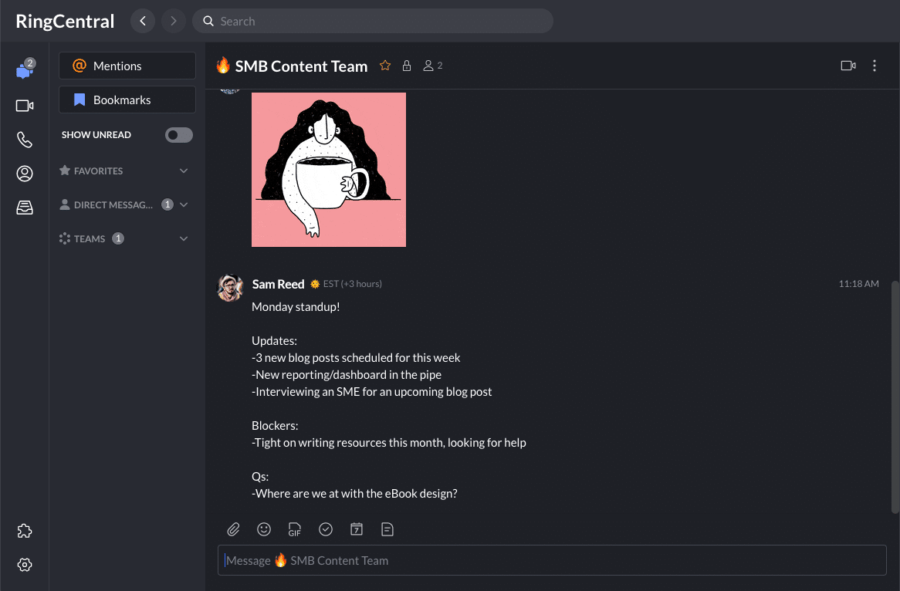
It’s all up to your team and how you work best together, really. Whether you like having regular meetings to update each other, or just assigning tasks in your group conversation, there are different options for managing tasks using the app…
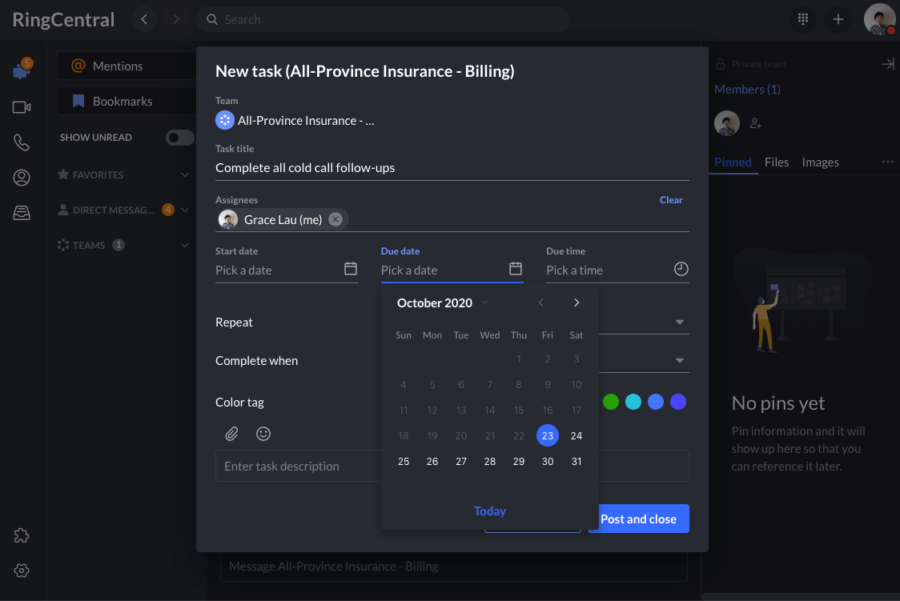
And did I mention that you can switch from a phone call to a video call with just one tap in the app?
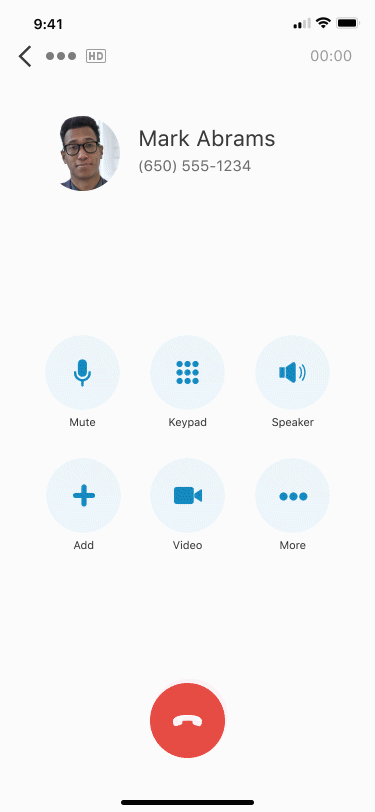
I don’t know about you, but sometimes when I’m talking to someone about a project, we find that it’s easier to get on video and share our screens—especially if we’re talking about design layouts or going over a document.
Pricing: The Essentials package includes phone and messaging for up to 20 users, it starts at $19.99. The Standard plan includes video calling, unlimited chat, and phone support, it’s $24.99.
The Premium plan includes everything the Standard plan does, but with additional features like 200 video participants for $34.99 a month. The Ultimate plan includes unlimited storage and is $49.99 (per user, per month).
🕹️ Get a hands-on look at how RingCentral makes managing tasks way easier—book a product tour to check it out!
💰 You can also use this calculator to see roughly how much your business could save by using RingCentral to support your team’s communication with each other, clients, freelancers, and more.
2. Asana
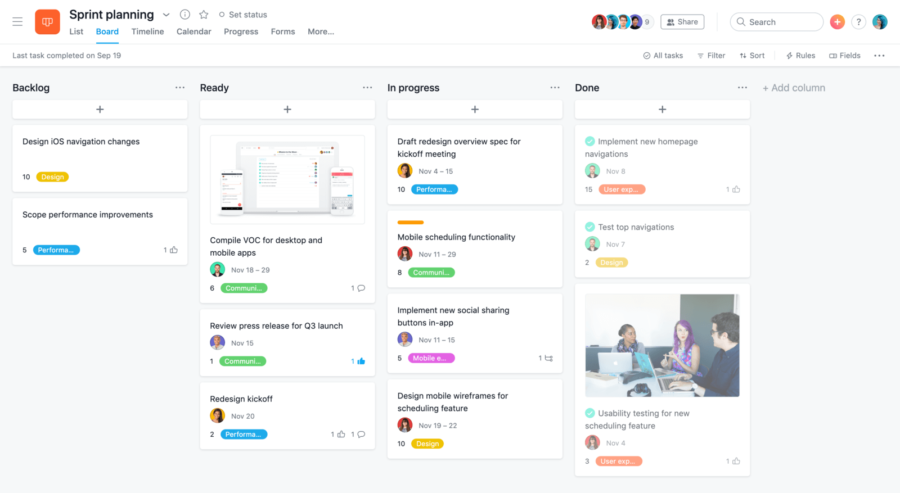
Asana is one of the most popular task management tools, and for good reason. It has a plethora of features to keep your work on track. You can share files, assign tasks, comment on tasks, and attach documents to projects. All of these seamless communication options make collaboration easy, particularly when you’re working on group projects.
It’s great task management software for small businesses, but if you’re working with a developer team, you may struggle to make it work for them simply because it’s not designed for developers like some other tools. One user on G2 even said that, “This platform is only good for the simplest and most basic of project management tasks.” I personally have used Asana mainly to manage a content calendar, which it’s perfectly suited for, but my only gripe with it is that I have to open another tab or window to use Asana, as opposed to the RingCentral app, which is fully integrated with my other communication channels.
That being said, Asana is really intuitive and easy to use, and it’s still one of my favorite task management tools.
Key features:
- Simple and beautifully designed user interface
- Intuitive drag-and-drop task boards
- File sharing
- Lets you build Gantt charts
- Automation for routine tasks, e.g., assigning work to the right teammates
Pricing: The Basic version is free! From there, the Premium is $10.99, Business is $24.99, and Enterprise price is available upon request. All per user, per month.
If you’re looking for a free option, there’s also Glip by RingCentral, which gives you free unlimited meetings and messaging—and yes, it includes those awesome task management features too.
3. Todoist
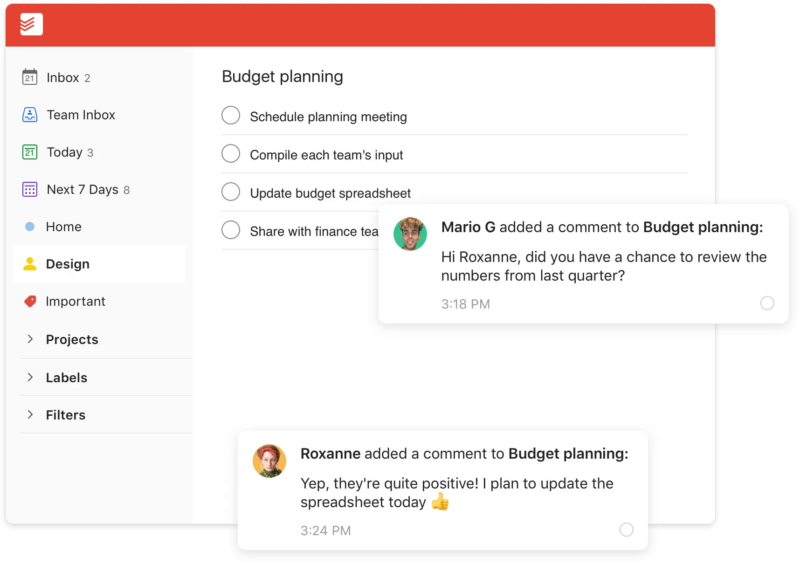
This task management solution is used by many teams worldwide. I used Todoist like a supercharged to-do list (like… five steps up from using the Notes app) and also really enjoyed it.
It has a clean, easy-to-use layout that is perfectly suited to small businesses. It’s geared towards individuals, making it a great collaboration tool choice if you’re a solopreneur or freelancer.
Though other task management tools may have more robust functionality, Todoist is a good way to dip your toe into task management with relatively simple task management features. You can’t assign multiple people to one task though, which makes it a tad difficult to manage team projects.
If you’re looking for a no-frills task management platform, Todoist could work well for you. I ended up having to switch away from it though in favor of a more well-rounded platform because I had to manage our folks’ work though. If you need a tool with communication options like messaging and video conferencing as well as task management, then look into RingCentral Office.
Key features:
- Stripped down and simple user interface
- Lets you create and track individual tasks
- Available as an app on iOS and Android
- Easy to organize and prioritize tasks
Pricing: It’s free, but the premium version is $3 per month, per user.
4. Monday.com
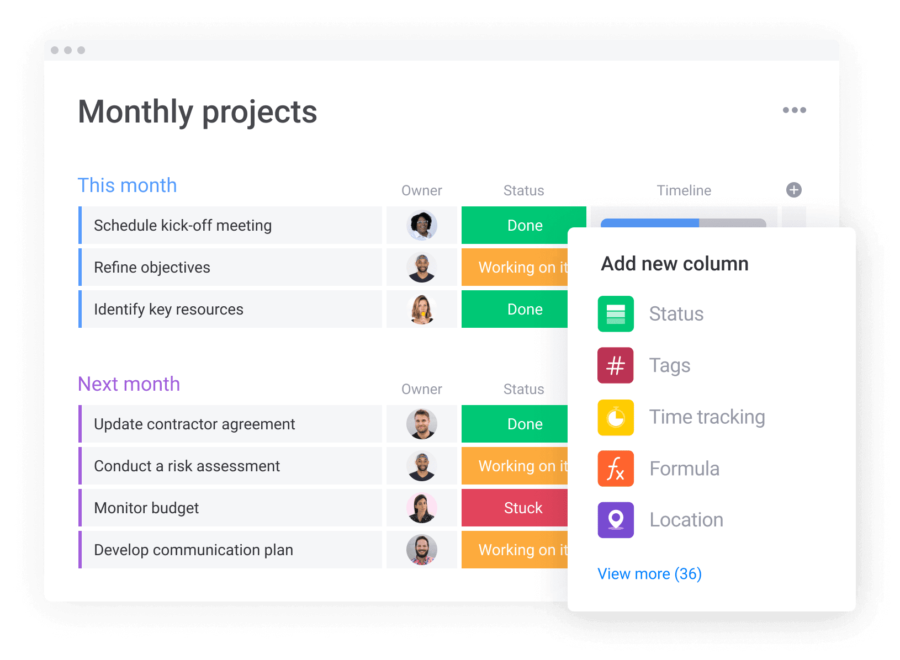
This platform is relatively new and has seriously risen in popularity over the past few years. (I love their ads. It’s one of the few brands I don’t hit Skip ad on when I’m on YouTube.)
I haven’t personally tried Monday.com, but I’ve heard great things about it. It looks like a pretty well-rounded platform with plenty of features to help you improve team collaboration. You can do all the usual things like, create task boards with colleagues, edit tasks, and set deadlines. I like that they let you start with a task board template instead of having to start from scratch. And the extra layer of security with a two-step authentication process is nice.
Unfortunately, Monday.com doesn’t have a free option. Some users have also found their pricing structure to be confusing, with PCMag saying it had “unnecessarily confusing pricing and plans.” The interesting thing is that the prices are based on the number of people on the team, tier of service, and length of commitment—not per month, per user like most software.
Key features:
- Customizable templates
- Modern user interface
- Unlimited boards
- Time-tracking
- In-app automations
Pricing: It starts at $24 for a team size of three.
5. Wrike
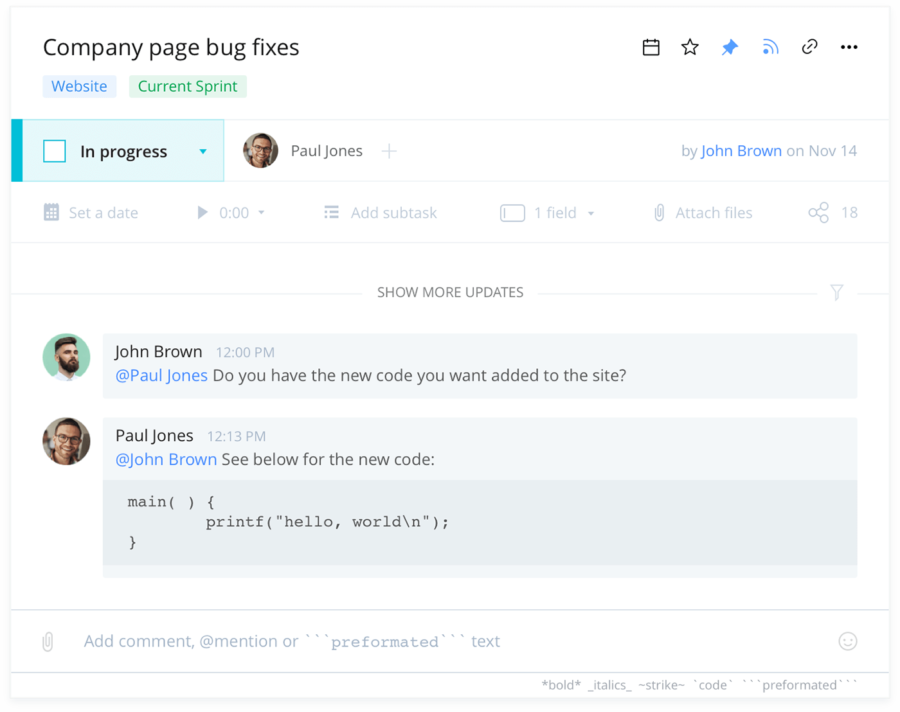
Wrike is a great tool for teams that want to improve their workflow management, and I’ve used it at multiple companies. Developers and design teams in particular seem to like Wrike, and I can see why! Wrike lets you create Kanban boards, Gantt charts, and pre-built agile templates. And of course, you can also share files and make comments on those boards, essentially working together in real-time as a team on tasks.
Like Asana, Wrike features a calendar view (coincidentally my favorite view), so that team leaders can track task assignments and progress across the board. If your team has more complex projects with lots of steps and stakeholders, then Wrike is the task management tool for you.
Key features:
- Customizable project templates
- Drag-and-drop functionality
- Lots of integrations such as Microsoft Excel and Salesforce
- Easy-to-use interface
- Simple navigation
Pricing: There is a free version! From there, it’s $9.80 per user, per month for Professional, and $24.80 per user, per month for Business. For Enterprise pricing, you’ll have to contact Wrike’s team directly.
6. Trello

Trello is another pretty common online task management tool. I’ve used this one before as well, but to be honest, my memory of it is that it’s pretty interchangeable with Wrike. Again, I’ve found that design teams seem to prefer Trello, maybe because of the different customization options and the ability to create work-back schedules, drag and drop tasks on project boards, and share files within projects.
For small businesses that need advanced project planning capabilities, you may need to upgrade to the paid version to use Gantt charts and share larger (250 MB) file attachments.
Key features:
- Drag and drop tasks
- Task assignments
- Create checklists
- Attach files
- Use deadlines for work management
Pricing: Standard Trello is free. The Business Class version is $9.99 per user, per month. The Enterprise version is $17.50 per user, per month.
7. Basecamp
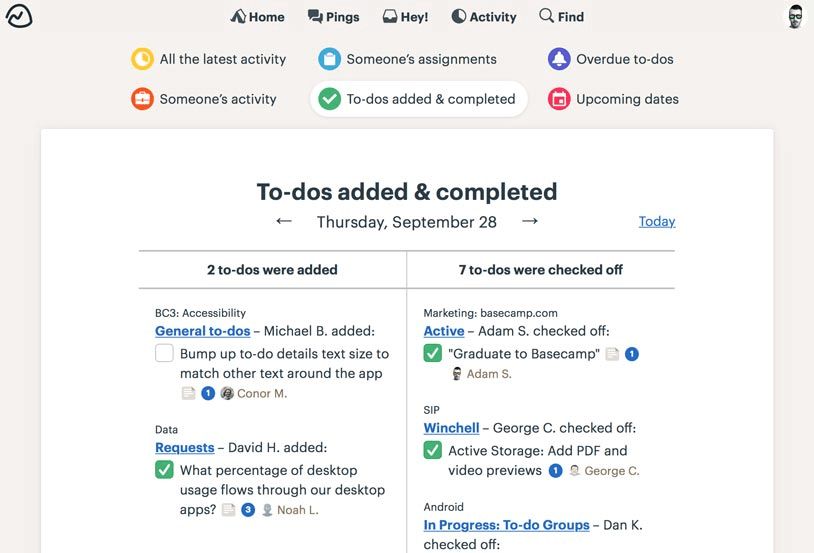
Basecamp describes itself as the “all-in-one toolkit for working remotely.” Using Basecamp, you can organize a team through tasks, subtasks, and use “hill charts” for time tracking. It’s great for teams that need to complete more complex tasks because it makes task lists super easy to create and track.
I’ve used Basecamp before, but this was years ago and they’ve made tons of improvements and updates since then. I do like how they’ve created a leveled-up version of your typical to-do list, and it does look more robust than Todoist. If you’re a fan of to-do lists but want something more sophisticated, then Basecamp looks like a good option—the only thing is it’s quite expensive compared to the other tools on this list.
Key features:
- View everything in one place with “activity view”
- Share files
- Assign tasks
- Split work into projects
- Simple task management
Pricing: The Business version is a flat fee of $99 a month.
8. Airtable
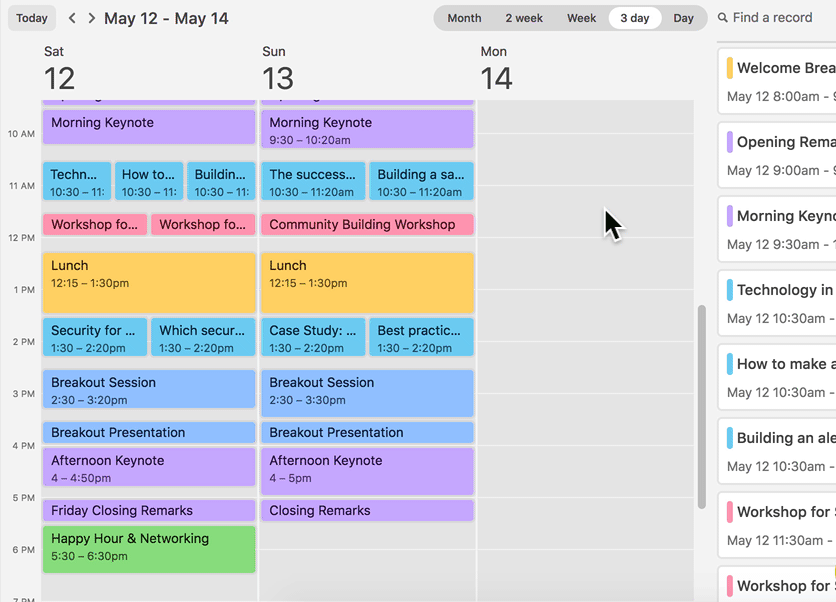
Airtable is different from your typical task management software in that it’s a datasheet/spreadsheet hybrid. I’m not the biggest spreadsheet fan, but I do love how Airtable uses the spreadsheet format!
We’re using it to track requests from other teams that want to create different types of content, and it definitely keeps that organized for us. The nice thing about Airtable is that this workspace is great for freelancers and small businesses because you can truly create a plan that suits you. It evolves as your team does, and you can add on features as you grow.
If you’re not familiar with spreadsheets though, it might take some getting used to. One user on G2 said that it’s “not intuitive for beginners, somewhat complex to organize information.” If you just want a straightforward way to manage tasks, then I’d just go with something more user-friendly like Todoist or RingCentral, which has a simple interface and 24/7 customer support if you run into any issues.
Key features:
- Customizable task management
- Easy to set up
- Has ready-made templates
- Create to-do lists
Pricing: There is a free Essentials version. Plus is $10 per user, per month, and Pro is $20 per user, per month. Enterprise is available, but you need to contact them for a quote.
9. Accelo
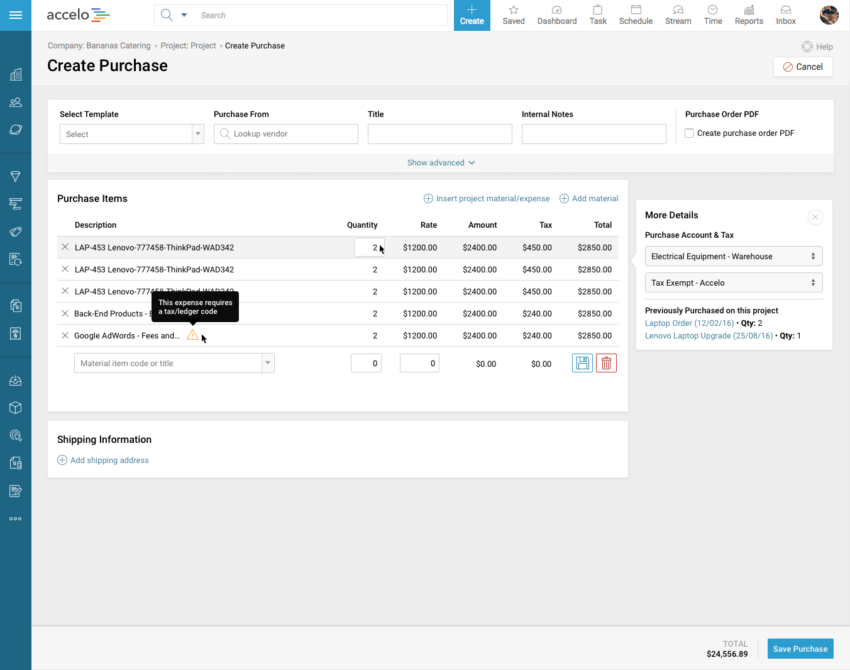
Accelo is another little-known option that’s popular with task managers of small businesses that need a platform with many integrations. So, if you’re often dealing with complex projects that require a number of tools, Accelo is a good choice. It’s very time-focused, with automatic time-tracking and team scheduling features.
One of the downsides is that it only offers paid customer support. If you’re on the free plan and encounter an issue, you might find it difficult to solve on your own. It’s also not the cheapest task management software on the list.
Key features:
- Integrated with Microsoft, including Outlook
- Templates
- Team scheduling
- Invoicing
- Automated notifications
Pricing: The features differ depending on the package you require, but it starts from $39 per user, per month. The All-in-One ServOps is $79 per user, per month.
10. Nifty
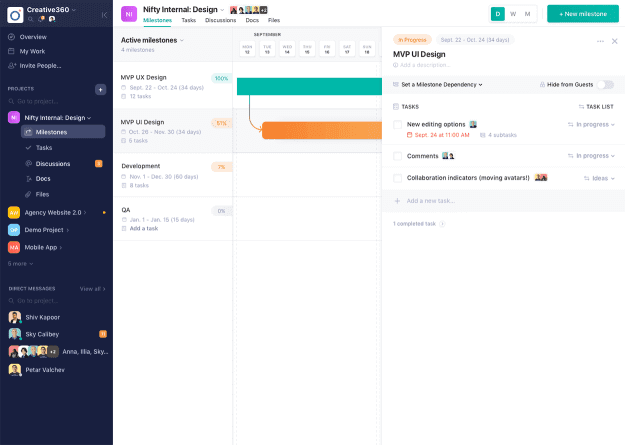
Nifty allows team members to create and track tasks based on milestones. You can also customize your work board to suit your team, import task boards, and check off tasks on the list. It’s a robust platform that allows managers and team leaders to see a cross-organizational project overview. This is great for getting deeper insight into projects—though if I didn’t know any better, I’d think this was Asana! The UI looks suspiciously like it… is it just me?
One issue is the lack of integrations with CRM systems. As one user said, “There are no options typical for CRM—budget management, cost estimation, billing hours.”
Key features:
- Task tracking
- Easy-to-use interface
- Analytics
- Intuitive templates
Pricing: For a team of 10, it’s $39 on the Starter plan, $79 on the Pro plan, $124 for the Business plan. All per user, per month. The Enterprise starting price is $549, per month.
11. Quire
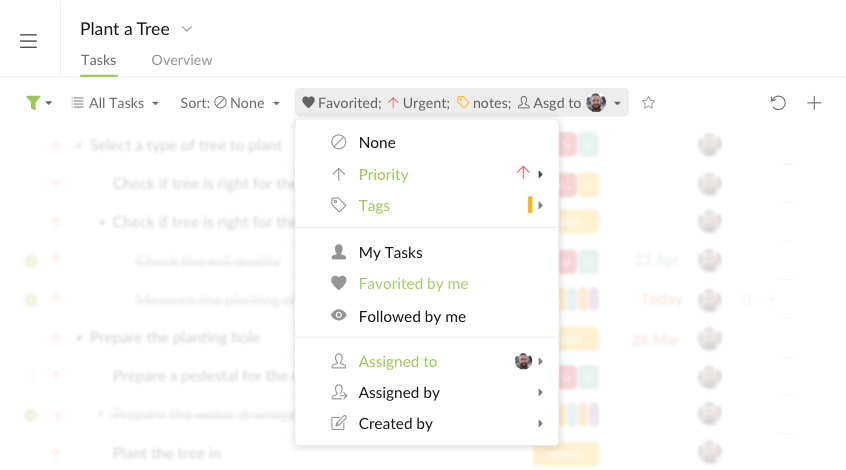
Quire is another task management software that’s great for smaller businesses and freelancers. It’s very simple, with only a few features, though they’re very effective for workflow management. It’s similar to Google Drive in that you can share files and documents. You can also filter tasks, map out a timeline, and track achievements.
The only downside is that it’s not integrated with any communication tools. If you want to message your team about a task, for instance, you’d need to get a separate app with a team messaging feature. (If that’s the case, then you might want to look at a task management app like RingCentral Office, which will give you HD video calling, phone calling, and team messaging all in the same place.)
Key features:
- Easy to use
- Simple navigation
- Task tracking
- Timeline mapping
- Project analytics
Pricing: Quire is free!
12. Flow
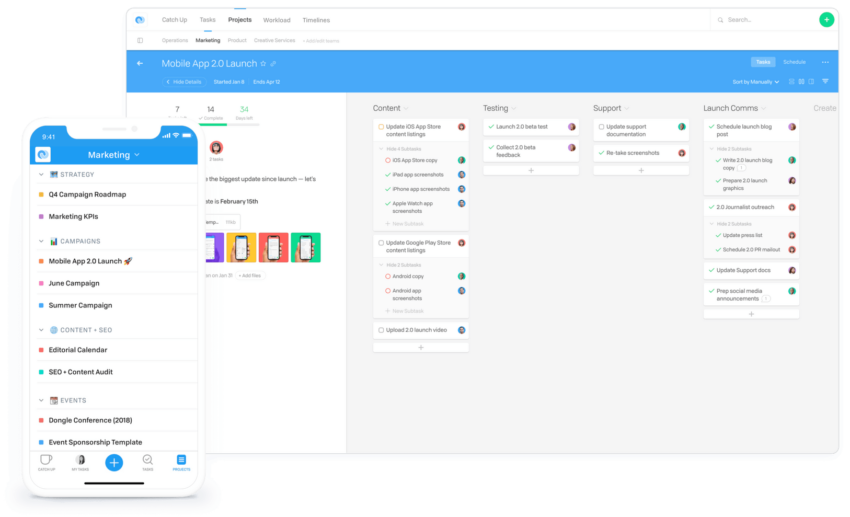
If you find that you get in a muddle when trying to manage different projects at once, then Flow may be a good task management platform for you and your business. It encourages the use of Gantt charts and worksheets, so you stay organized even if you’ve got a big workload. It offers pre-built templates for ease and lets you color-code your tasks—useful if you’re working in a team.
However, its design means it may be difficult to use if you’re not familiar with this type of software. As one review put it, “It takes a while to get used to the functions and capabilities of the software.” You may be better opting for a task management platform that has an easy-to-use interface that is simple to navigate, like RingCentral Office.
Key features:
- Gantt charts
- Color-coding tasks
- Drag and drop timeline
- Multiple team sharing function
Pricing: The Basic version is $6 per user, per month. The Plus version is $8 per user, per month, and the Pro is $10 per user, per month.
13. Teamly
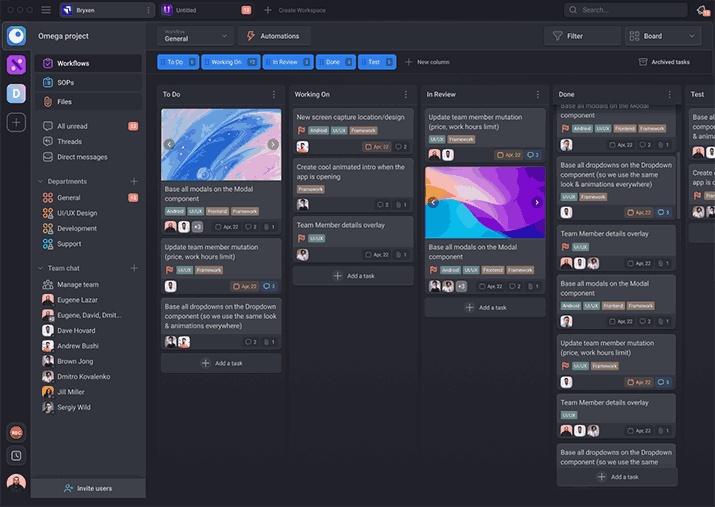
Teamly is transforming how remote teams manage projects and tasks by integrating real-time chat, task management, screen capture, and time tracking into one seamless platform. This comprehensive tool is designed to keep team members in sync, streamline workflows, and ensure projects are completed efficiently. With Teamly, teams can communicate effortlessly, manage tasks effectively, and track progress in real-time, all within a user-friendly interface.
Key features:
- Real-time Chat: Enables immediate team communication.
- Task Management: Assign, prioritize, and track tasks.
- Screen Capture: Share visuals and instructions.
- Time Tracking: Monitor time spent on projects.
- Kanban-style Workflows: Visualize project progress.
Pricing: Teamly offers a free plan for basic use, with more advanced features available in the Starter plan at $47/month and the Business plan at $97/month, catering to teams of all sizes and project demands.
Which task management software will you try?
Now you’ve got a better understanding of what project management software is and how it might be able to help you and your workflow, are you ready to try it out? When choosing task management software, remember to:
- Pick software that can offer improved communication
- Choose a platform that has all the features you and your team need
- If you use other tools, pick one with great integrations to keep everything in one place
Bottom line, whatever software you choose should empower you and your team to stay organized, no matter whether you’re working from the office or a coffeeshop or a beach or… you get it. Happy hunting!
Originally published Jan 26, 2021, updated Jun 18, 2024





